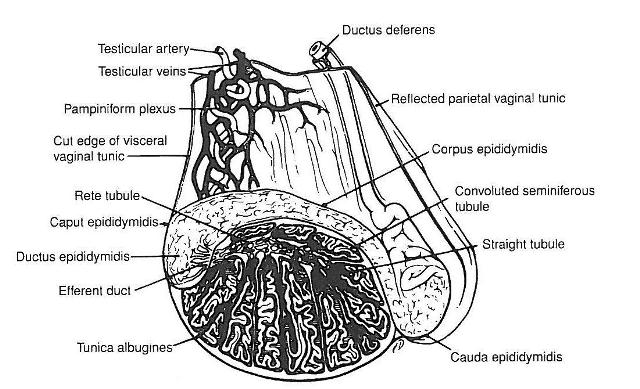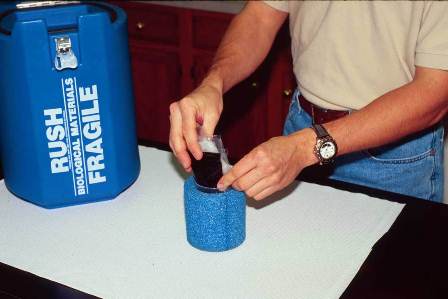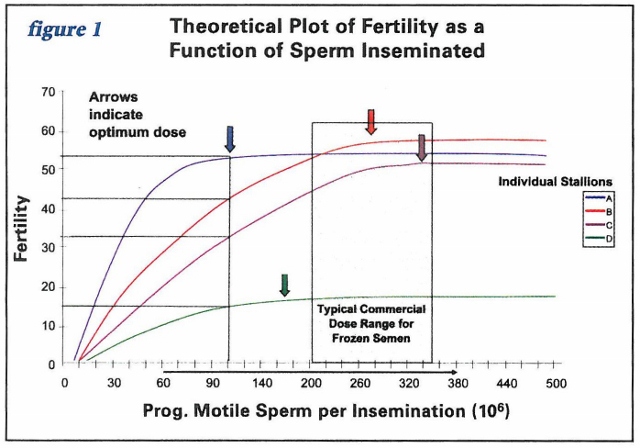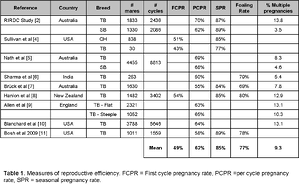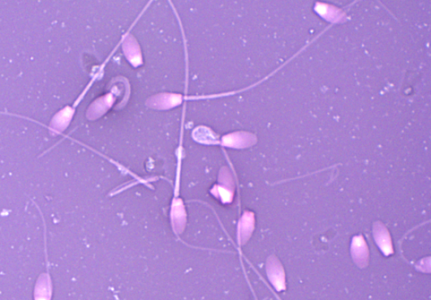
Have you ever wondered what happens to all those sperm the stallion produces every day (5 billion or more)? If he is not bred or collected then where do the sperm go? We know that sperm are produced in the testicle and move from the testicle into the efferent ducts and then into the head of the epididymis. It takes about 7-10 days for sperm to travel from the head of the epididymis to the cauda epididymis (tail; figure middle right). This time frame is not altered by how often the stallion ejaculates. The old wives tale that you can get immature sperm if the stallion is bred too often is just not true. In this article, Dr. Ed Squires and Dr. Pat McCue review the causes, diagnosis and treatment for stallions which accumulate sperm.
